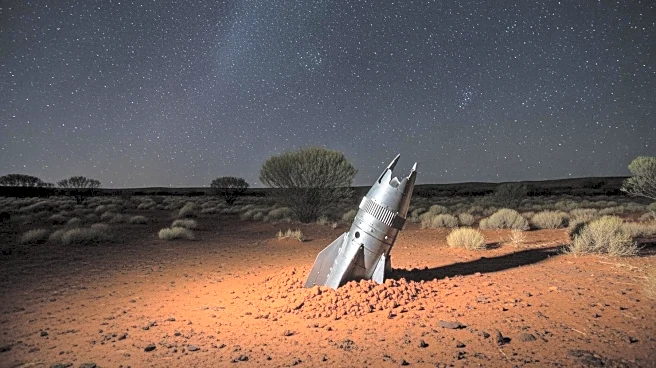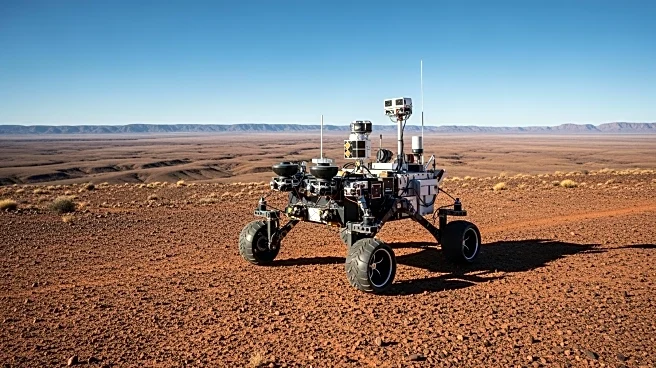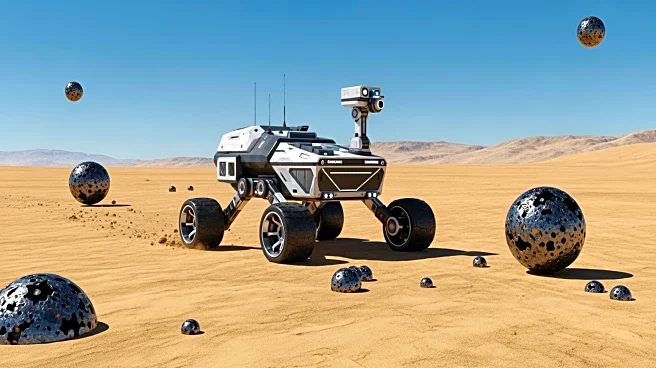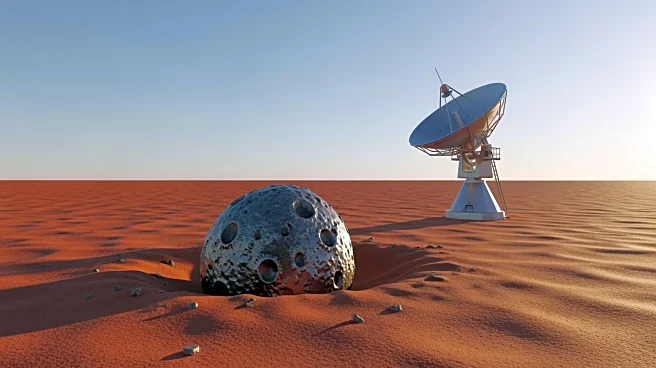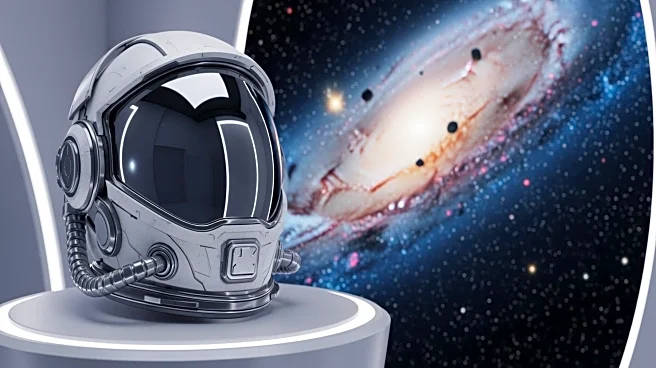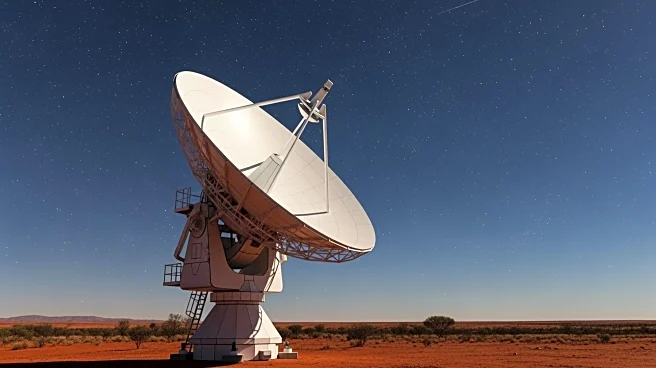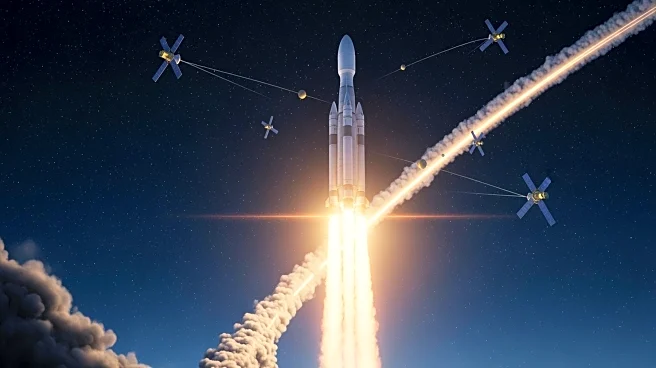What's Happening?
A mysterious metal object discovered in the Australian outback is believed to be part of a Chinese rocket, according to the Australian Space Agency. The debris, found near Newman, Western Australia, is thought
to be a composite overwrapped pressure vessel (COPV) used in rockets to hold high-pressure gases and liquids. The agency is conducting further technical analysis to confirm the debris's origin and is working with international counterparts to investigate. This incident highlights the challenges posed by space debris, as increasing numbers of rocket launches contribute to the accumulation of space junk in Earth's orbit.
Why It's Important?
The identification of the debris as potentially originating from a Chinese rocket underscores the international dimension of space debris management. As space activities expand, the risk of debris impacting terrestrial environments grows, necessitating global cooperation to address the issue. The incident also raises concerns about the safety and sustainability of space operations, as debris can pose significant risks to both space missions and people on the ground. Effective debris mitigation strategies are essential to ensure the long-term viability of space exploration and to protect Earth's environment.
Beyond the Headlines
The discovery of space debris in the Australian outback highlights the need for comprehensive international agreements on space debris management. As more countries and private entities engage in space exploration, the potential for debris-related incidents increases. This situation calls for enhanced regulatory frameworks and technological innovations to track, manage, and reduce space debris. The incident also emphasizes the ethical responsibility of space-faring nations to minimize their environmental impact both in space and on Earth.
